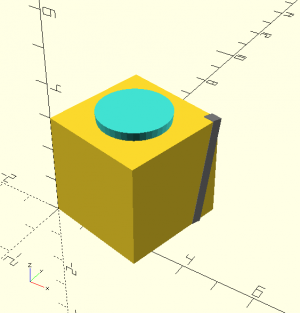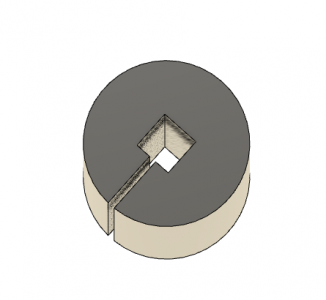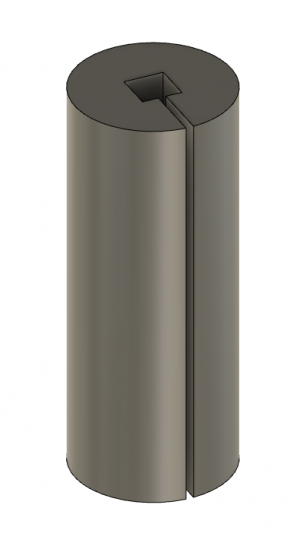- Joined
- Jul 28, 2017
- Messages
- 2,384
I've used OpenSCAD to explore different cutting tool geometries. I find it handy because you create objects using a script rather than a GUI approach, so it's easy to change angles and then view the result, using its "render" operation. You can easily move the viewpoint so you can see what the cutter looks like from the workplane perspective. Here's an example of an attempt to make a simplified tangential toolholder for a lathe:

The standard tangential toolholder must have a slot that is cut on a compound angle, which tilts the bit forward AND sideways. I thought it might be possible to cut a single angle and then rotate the holder to get something that approximated the sideways tilt. I think it will work, but it has some disadvantages compared to a standard tangential toolholder -- most notably the possibility of the toolholder body hitting the chuck jaws, or the work hitting the body. Machining in some extra relief will probably address this, but now we're looking (again) at a more complex machining job.

The standard tangential toolholder must have a slot that is cut on a compound angle, which tilts the bit forward AND sideways. I thought it might be possible to cut a single angle and then rotate the holder to get something that approximated the sideways tilt. I think it will work, but it has some disadvantages compared to a standard tangential toolholder -- most notably the possibility of the toolholder body hitting the chuck jaws, or the work hitting the body. Machining in some extra relief will probably address this, but now we're looking (again) at a more complex machining job.



